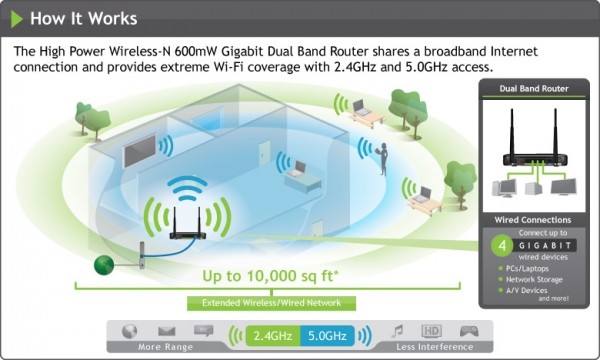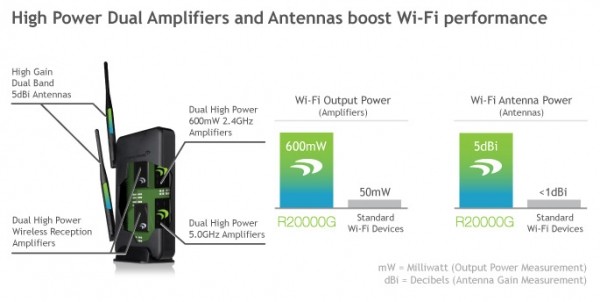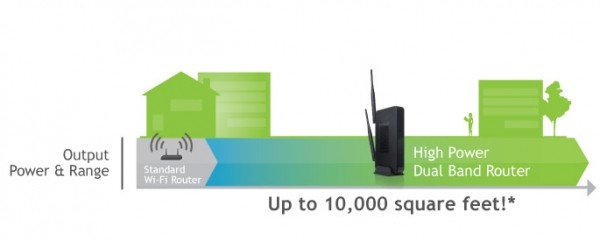Leeky
Posts: 3,357 +116
U.S. manufacturer of long-range wireless communications products for the home and office Amped Wireless yesterday announced the release of their new flagship router, the R20000G, a high-performance Wireless-N dual-band router. The device features a 620MHz internal processor, four gigabit Ethernet ports, one gigabit modem Ethernet port, dual 2.4GHz and dual 5.0GHz 600mW amplifiers combined with 5dB antennas for providing up to 10,000ft² of simultaneous 2.4GHz and 5.0GHz Wireless-N coverage at up to 600Mbps.

"Amped Wireless has continued to make strides in the industry with our innovative power amplifying technology and design," said Jason Owen, president and CEO at Amped Wireless. "The R20000G is the ideal product for any consumer that wants to outfit their entire office or home and backyard, with a high performance router with the most Wi-Fi coverage on the market today."
Part of the reason the new router achieves such high levels of coverage is due to the powerful WiFi amplifiers. Amped Wireless says more traditional Wireless-N routers use 50mW amplifiers, in comparison the R20000G uses 600mW amplifiers which gives substantially more powerful WiFi coverage. The same is true of the antennas, which are over five times more powerful than more traditional wireless antennas.

Support is provided for the latest wireless security protocols as well as a USB port for storage devices which can be shared locally across networked devices or accessed remotely via FTP. The wireless signal strength is also adjustable from 15% to 100% and the router can provide up to four separate wireless guest networks with restricted access to the internet.
The router also includes support for setting up parental controls as well as scheduling for wireless access and user access control via IP or Mac address and a smart firewall. It can be wall mounted, laid flat on a desk or other similar surface as well as stood vertically using the supplied stand.
It's available for purchase from the company's website at a cost of $179.99, with free ground shipping, a 30-day return period and includes a one year manufacturers warranty. Stock will be arriving with selected retailers shortly.
